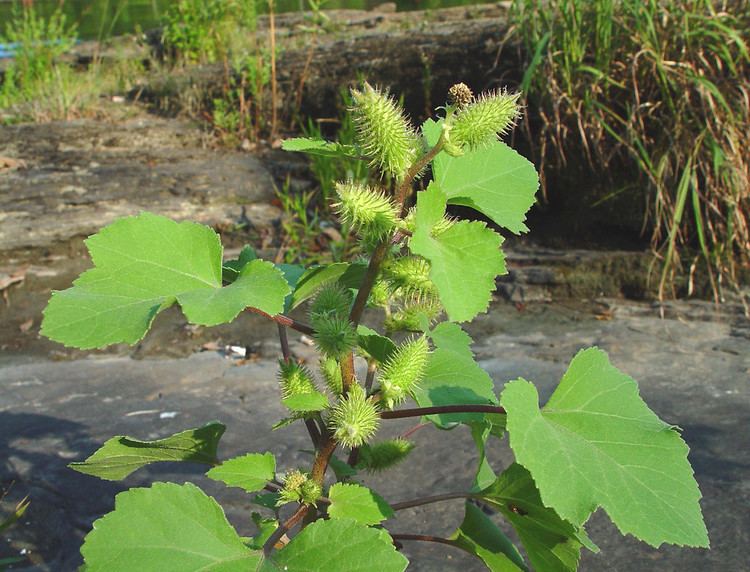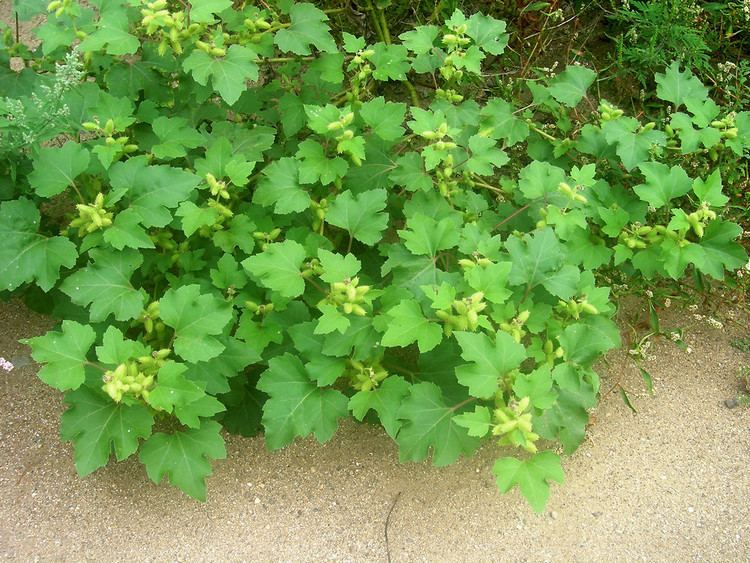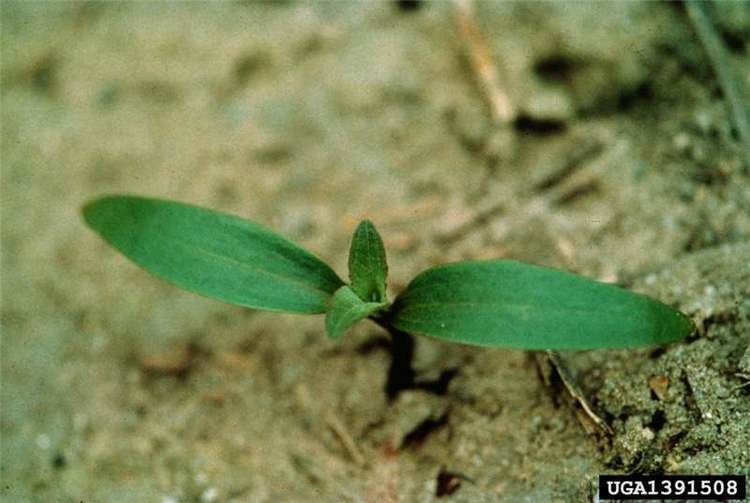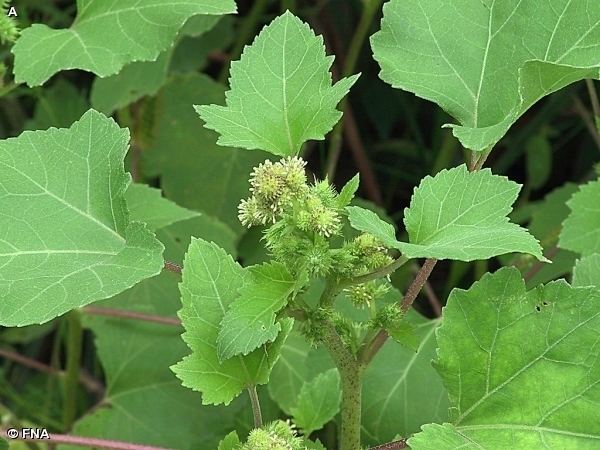Higher classification Xanthium | Scientific name Xanthium strumarium Rank Species | |
 | ||
Similar Xanthium, Daisy family, Xanthium spinosum, Amaranthus retroflexus, Xanthium occidentale | ||
Common cocklebur xanthium strumarium san diego california
Xanthium strumarium (rough cocklebur, clotbur, common cocklebur, large cocklebur, woolgarie bur) is a species of annual plants belonging to the Asteraceae family. It probably originates in North America and has been extensively naturalized elsewhere.
Contents
- Common cocklebur xanthium strumarium san diego california
- Reproductive biology
- Toxic or medicinal phytochemistry
- Use by Native Americans
- References

Reproductive biology

The species is monoecious, with the flowers borne in separate unisexual heads: staminate (male) heads situated above the pistillate (female) heads in the inflorescence. The pistillate heads consist of two pistillate flowers surrounded by a spiny involucre. Upon fruiting, these two flowers ripen into two brown to black achenes and they are completely enveloped by the involucre, which becomes a bur. The bur, being buoyant, easily disperses in the water for plants growing along waterways. However, the bur, with its hooked projections, is obviously adapted to dispersal via mammals by becoming entangled in their hair. Once dispersed and deposited on the ground, typically one of the seeds germinates and the plants grows out of the bur.
Toxic or medicinal phytochemistry

The plant may have some medicinal properties and has been used in traditional medicine in South Asia and traditional Chinese medicine. In Telugu, this plant is called Marula Matangi.

However, while small quantities of parts of the mature plants may be consumed, the seeds and seedlings should not be eaten in large quantities because they contain significant concentrations of the extremely toxic chemical carboxyatratyloside. The mature plant also contains at least four other toxins.

Use by Native Americans

The Zuni people use the canadense variety for multiple purposes. The chewed seeds are rubbed onto the body before the cactus ceremony to protect it from spines. A compound poultice of seeds is applied to wounds or used to remove splinters. The seeds are also ground, mixed with cornmeal, made into cakes, and steamed for food.
